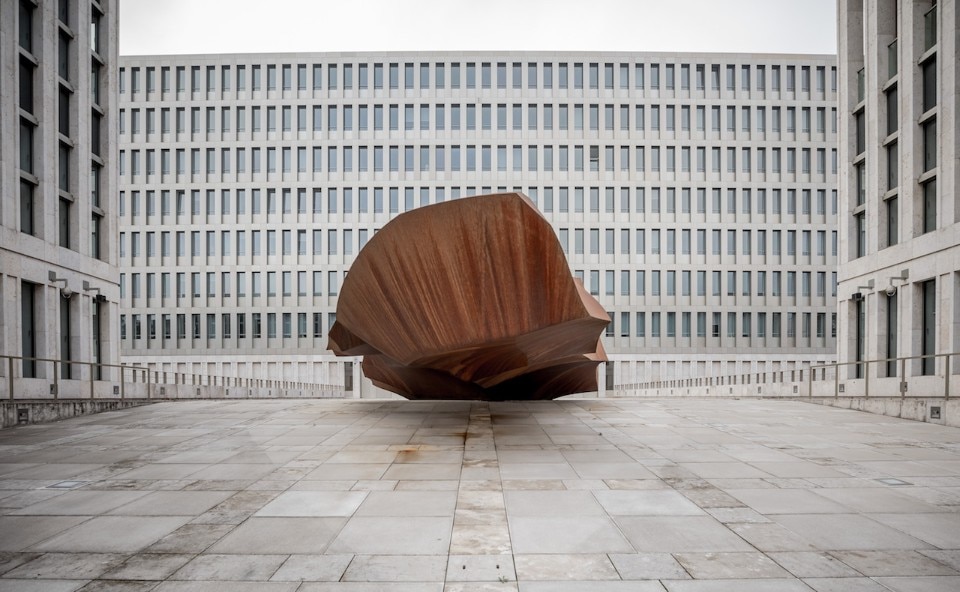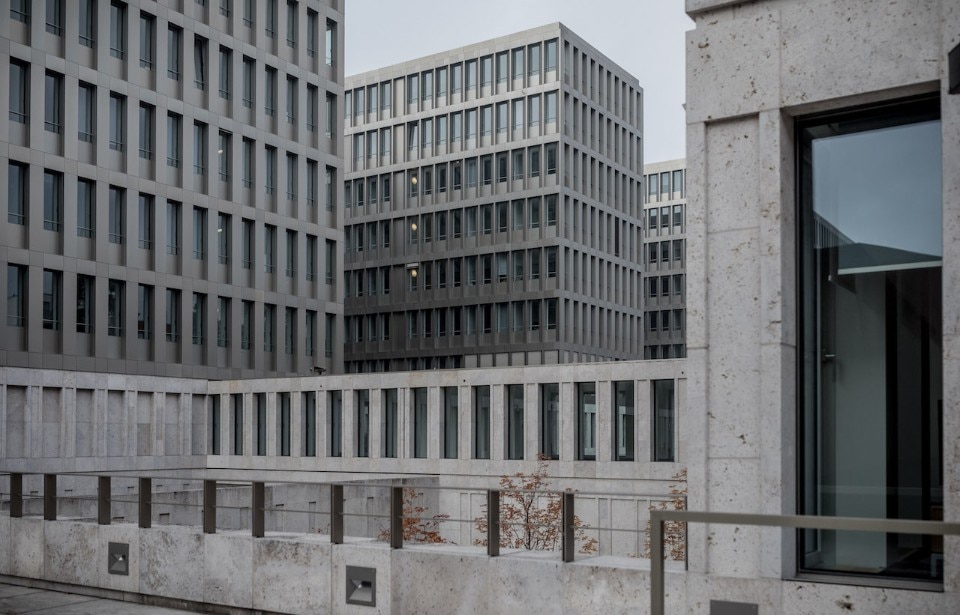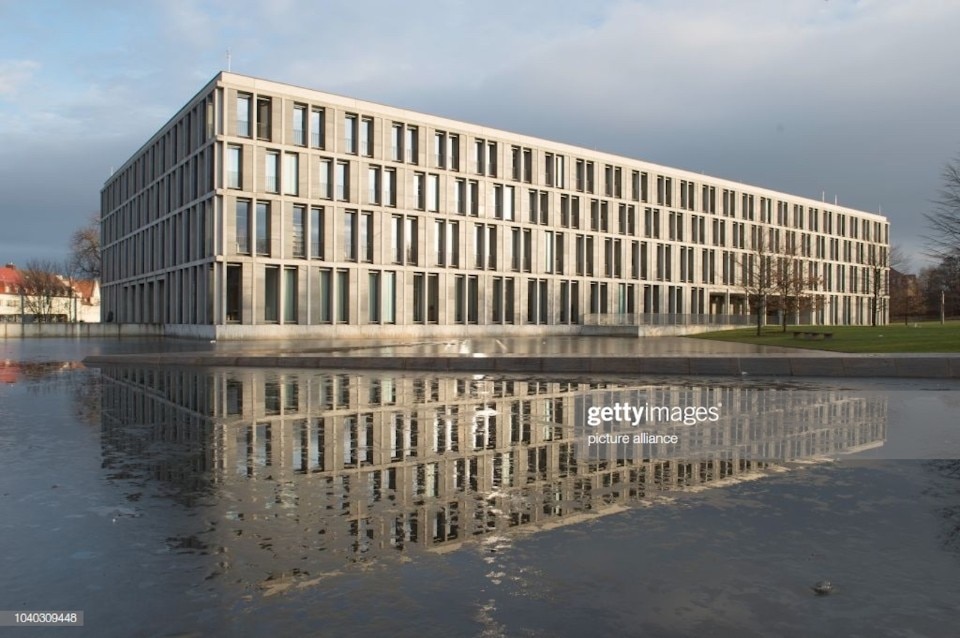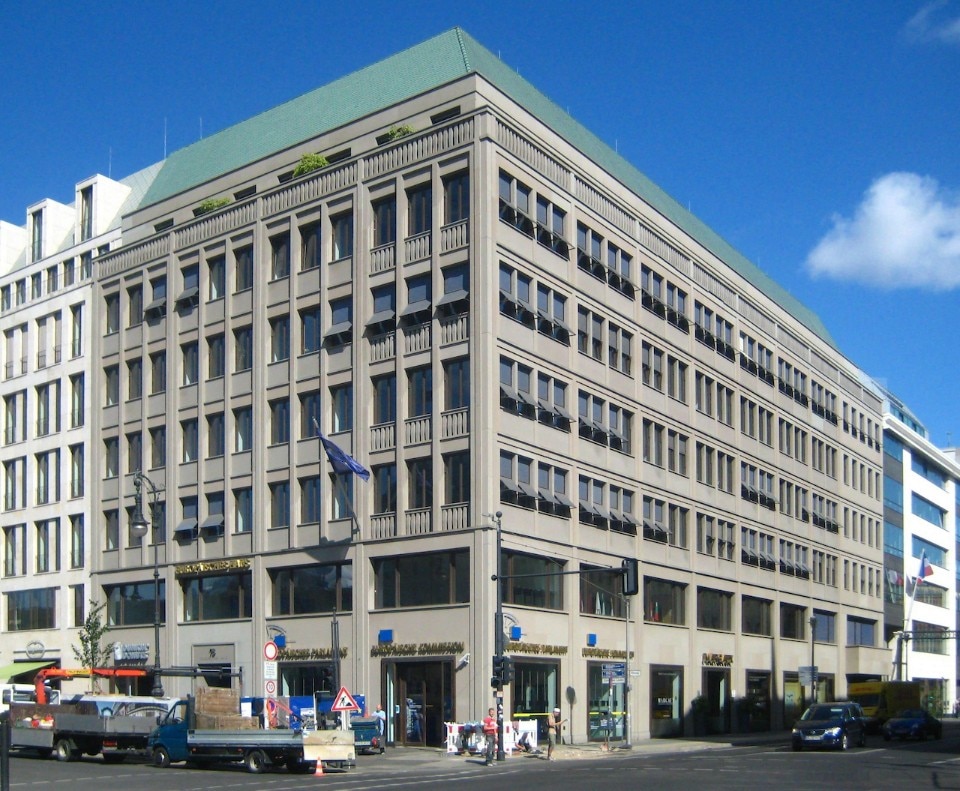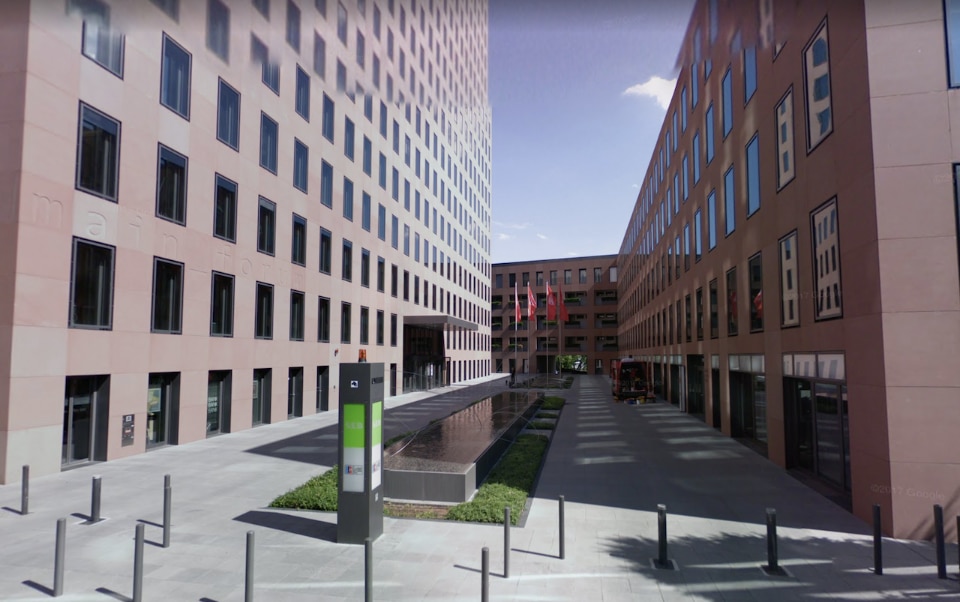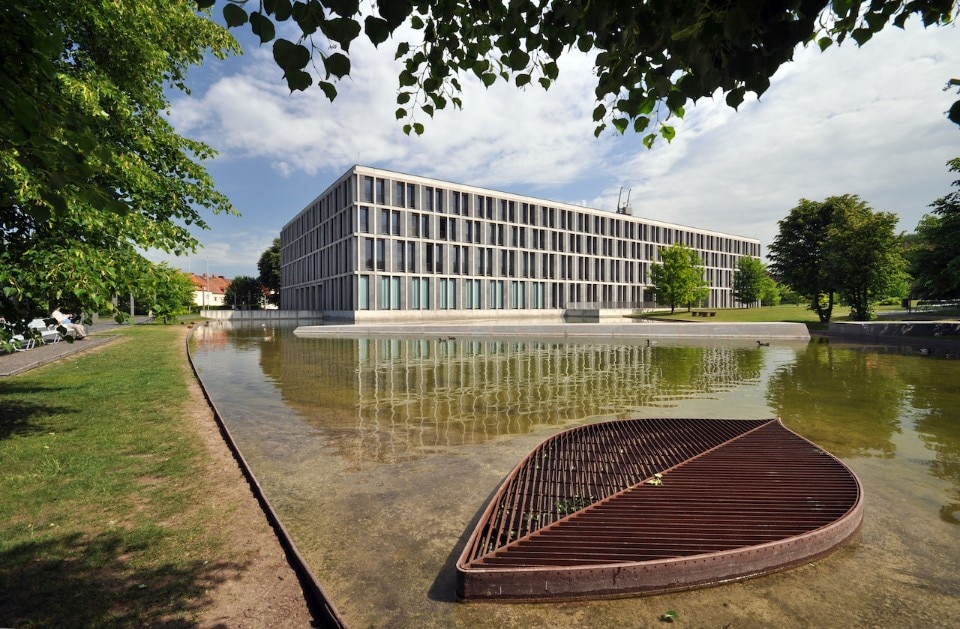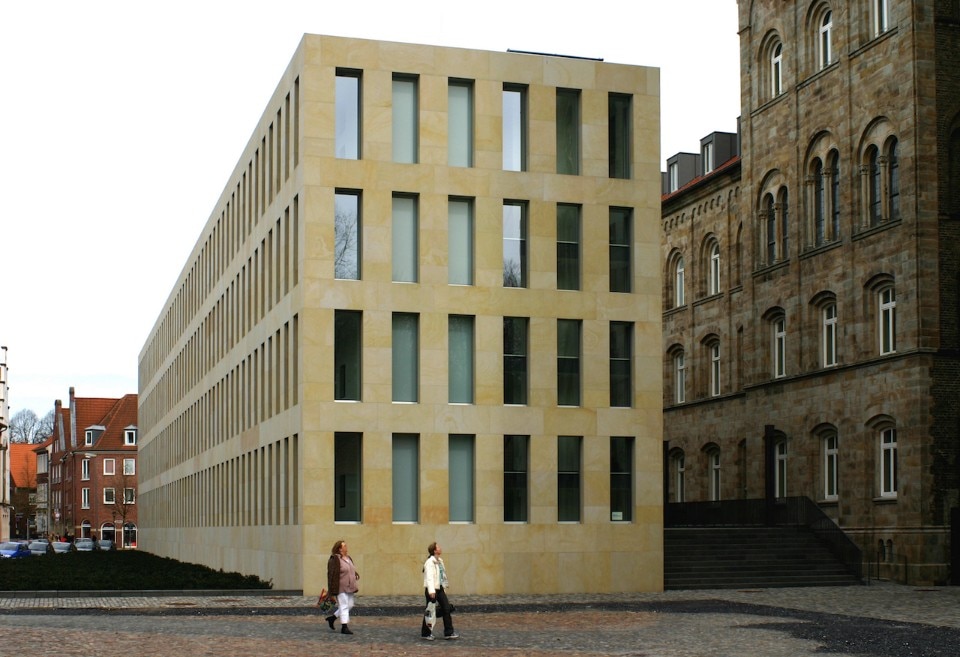This article was original published in Domus 1034
Is there really a tendency towards “birdcages” in contemporary German architecture? The matter is, of course, more complex than is generally assumed. Or, put in a less catchy way, has a trend towards standardisation, towards monotonous facade structures, prevailed over differentiation or heterogenisation when it comes to buildings and structures, and our relationship with the urban environment?
The official opening of the new headquarters of the German Bundesnachrichtendienst (BND) – the Federal Intelligence Service – in Berlin in February was a thought-provoking opportunity to look back at Berlin’s architectural history. The BND headquarters, designed by Jan Kleihues, points to the resurrection of a Prussian classicism that culminated in Albert Speer’s plans for Germania (Berlin), a global capital crammed with power, in the 1930s and featuring Hitler’s Reich Chancellery as the pinnacle of Nazi megalomania. Kleihues’s monumental structure, measuring 260,000 square metres, easily squares up to the size of the Pentagon and its 14,000 endlessly repeated arrowslit windows might make passers-by on Chausseestrasse in Berlin-Mitte quite dizzy. This may be intentional, so that it does not occur to anyone to come too close to this concrete stronghold. The symbolic counterweights, mainly found in the outdoor facilities, are cosmetic at best. The fortress-like nature of the place prevails as it rises up in the midst of this urban centre, surrounded by largely small residential and commercial properties.
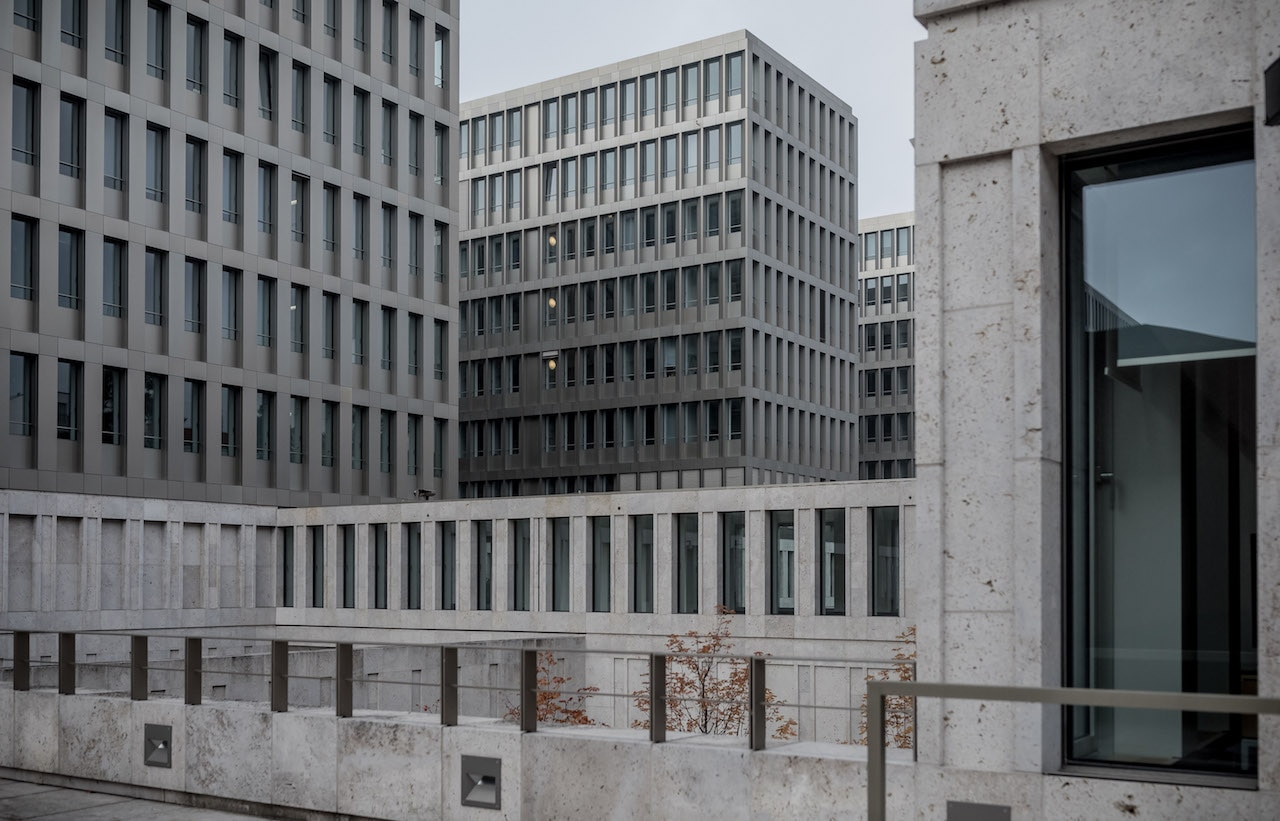
The Federal Intelligence Service headquarters, previously located in the rural Pullach suburb of Munich, now showcases its force in the heart of the German capital with a concrete structure that is about 300 metres long, nine storeys tall and features a repetitive grid facade. We do not need to look as far back as the years of the Third Reich, when Albert Speer and Wilhelm Kreis wanted to create a prestigious north-south axis. Suffice to bring to mind the plans for a reunified Berlin after 1989, when Jan Kleihues’s father Josef Paul Kleihues steered the dogma of “critical reconstruction”.
In 1994, art and architectural historian Heinrich Klotz, who had been a judge in the Potsdamer Platz competition, criticised Hans Kollhoff in particular. The latter had presented a design for a perimeter-block development for Potsdamer Platz which took Otto Kohtz’s Scherl newspaper building (1927) – with a monotonous, serial facade and staggered attic floors – as inspiration for a revival of Berlin’s blocks. Kollhoff’s design was not adopted at the time – and Renzo Piano’s Sony building was erected instead – but the ultimately influential architectural statement that unashamedly accompanied it sought to abolish the polymorphism of subdivided blocks. Heinrich Klotz’s scathing criticism culminated in the accusation that Kollhoff was “cosying up to Prussian classicism” and “revealing echoes of Fascist architecture”. Generally speaking, Klotz – the founding director of the German architecture museum in Frankfurt – believed that the new architectural trend spreading in Berlin demonstrated a “new penchant for rigour”.
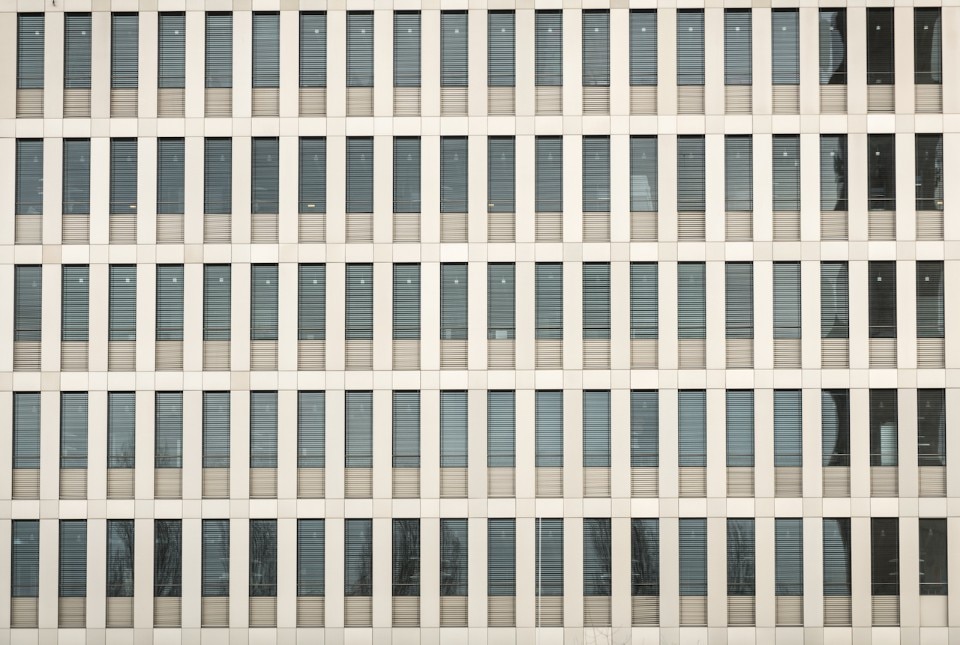
Nor can this prorigour accusation be dismissed outright for Kollhoff’s competition design for the redevelopment of Alexanderplatz, which proposed a regular grid pattern, the only diversity being provided by different tower blocks. Although these visions of a “normal city” (as the text accompanying the invitation for entries to the Luisenstadt/Heinrich-Heine-Strasse planning competition put it) were not implemented, they certainly influenced a new generation of architects. Kollhoff’s Leibniz-Kolonnaden (2000) on Walter Benjamin Platz conjures up images of a bygone Berlin; and the Europäisches Haus (1999) on Pariser Platz pays homage to a uniform facade structure with repetitive windows. As too Delbrück-Haus (2003) on Potsdamer Platz, despite its recessed sections and striking structuring, makes no attempt to conceal the influence of Aldo Rossi’s Città analoga, a comprehensive set of urban-planning principles.
The question is whether German architecture is currently shaped more by complexity and variety, by experimental and new developments, or by monotonous forms, the airs and graces of prestige and show, and assertions of power. Anyone who – admittedly from an arbitrary perspective – looks at what has, in recent years, become established as the better average German architecture will quickly experience concerns regarding the prevailing quality standard. Hi-tech architecture in all its possible permutations now produces banal en masse images of a futuristic city, see HPP’s Vodafone Campus in Düsseldorf (2012), and totally uninspired but bloated structures with tedious serial facade divisions such as BHBVT’s Leibniz Institute for Astrophysics in Potsdam (2010). After all, with the name Busmann + Haberer, the same office designed Cologne’s Museum Ludwig back in 1976.
The question is whether German architecture is currently shaped more by complexity and variety, by experimental and new developments, or by monotonous forms
Werner Sewing once mused that the Rationalist Oswald Mathias Ungers – who left Berlin in 1967 following unrest in the city provoked by student protests and moved to Cornell University in New York – abandoned the townplanning sphere to his colleagues Hans Kollhoff, Jürgen Sawade, Christoph Mäckler and Max Dudler. Ungers’s architectural teachings and his clear and detailed design ideas from floor plan to seemingly inconspicuous detail – implemented in near textbook fashion in his private Haus II (1988) in the Eifel region and Haus III (1996) in Cologne Müngersdorf greatly influenced many younger architects in the 1990s.We see evidence of this in Erfurt’s Federal Labour Court (1999), built by Kollhoff’s former colleague Gesine Weinmiller, although she was careful to balance out the severity of the orthogonal building and unchanging grid pattern by slightly shifting the windows.
Max Dudler has never embraced Ungers’s Rationalist legacy tout court either and the Swiss architect is not focused on total formal conso- nance. Instead, he plays with variances in such a way as to place the structure of the facade and the window/building arrangement in atmos- pheric tension. Dudler created this tension in the three-storey Lindenhof neighbourhood (2018), in Berlin-Lichtenberg, primarily by positioning the windows and balconies differently. Even the diocesan library in Münster (2005), strongly characterised by orthogonal forms, ultimately comes to life thanks to its atmospheric relationship with the neighbouring mediaeval Liebfrauenkirche.
In this way, Dudler breaks up the invariance of Ungers’s order formula without risking prominent breaks, unlike Jan Kleihues’s headquarters of the Federal Intelligence Service in which the monumental edifice is completely sealed off from the urban surroundings by the dominance of the block structure.This rejection of interaction is the message sent by the new Federal Intelligence Service headquarters to the outside world. The headquarters are now seen as a city within because Jan Kleihues has concentrated all the formerly decentralised departments in a megalomaniac building and revived the hub of secret service power in central Berlin of all places, close to the former Nazi government’s centre of power on Wilhelmstrasse. This is, of course, anything but a neutral political message.
Klaus Englert (1955), architecture critic, writes for the Frankfurter Allgemeine Zeitung and German, Swiss and Austrian radio broadcasters. His latest book, Wie wir wohnen werden. Die Entwicklung der Wohnung und die Architektur von morgen, Reclam, Philipp, jun. GmbH, Verlag, Ditzingen, will be published in May 2019.


